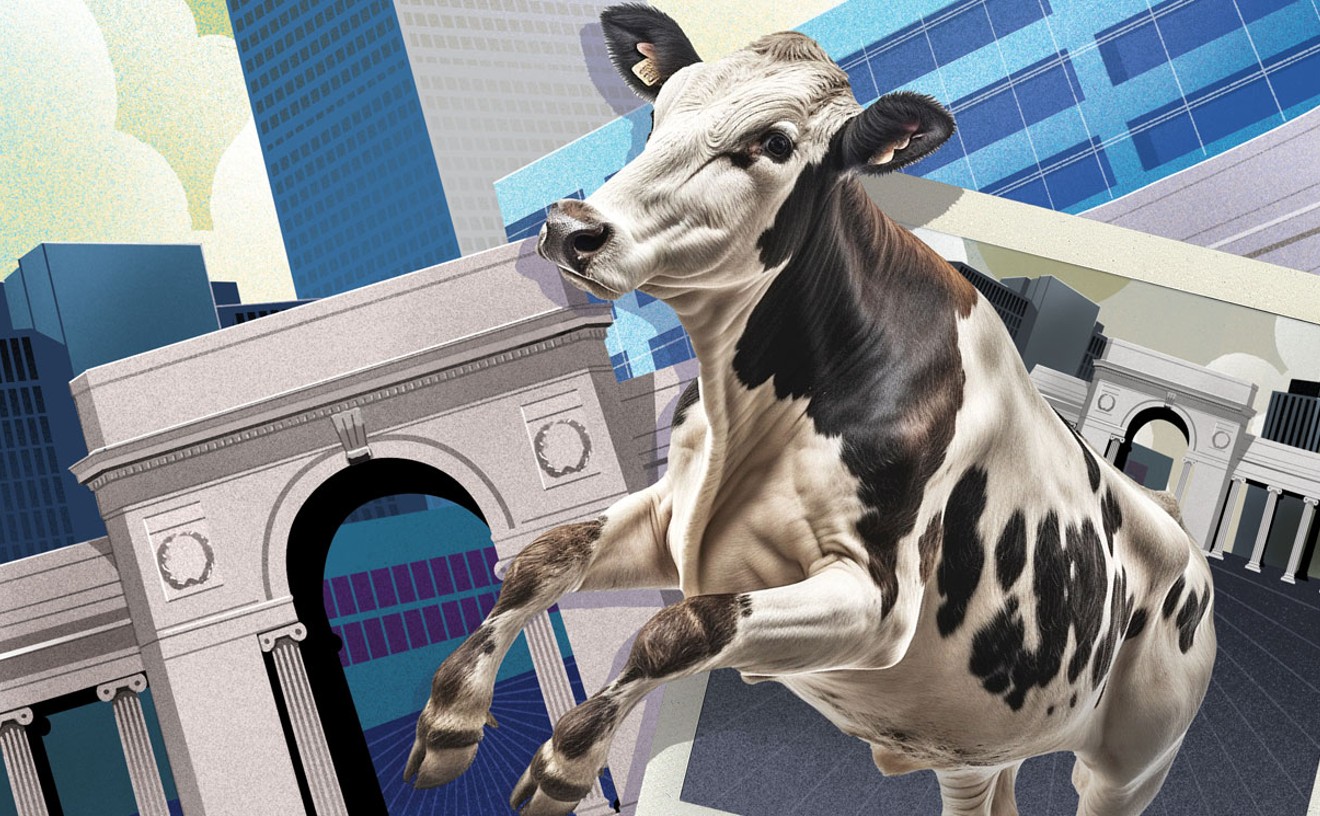But, as The Alamo's director and co-writer John Lee Hancock says throughout the press material, all of these films lacked historical accuracy, which more than suggests that his take is the only one of merit. Let those other tales make myths of men; native Texan Hancock's will make men of myths. And so we have a Davy Crockett (Billy Bob Thornton) who prefers to be called David and refuses to wear the coonskin cap unless it's "really cold"; a William Travis (Patrick Wilson) who admits to gambling, whoring and abandoning his pregnant wife; a Sam Houston (Dennis Quaid) who stays away from San Antonio not to form an army, but to draft a constitution and form a government at Washington-on-the-Brazos; and a Jim Bowie (Jason Patric) who spends the majority of the film confined to a bed to slowly die of typhoid and consumption. And, because they have little else to do but talk and talk and talk until Santa Anna's attack late in the movie, the Holy Trinity have plenty of time to debunk their own mythology to each other. "People expect things," Crockett says of living up to his legend, addressing the ragtag army of Texan regulars and militiamen, but talking as much to the audience who, Hancock believes, only know part of the story he will reveal in full.
But, truth really be told, there is nothing new in this version. Hancock's Alamo is like a cover of a song you know by heart, that has minor changes made here and there but is otherwise recognizable. (One of the oddest alterations is Emilio Echevarría's Santa Anna, turned into a preening, teeth-gnashing big-screen baddie who looks like an aging drag queen in Napoleon's hat.) The result is something that feels very much like an overachieving made-for-TV movie -- a history lesson dolled up like an action movie, with the action relegated to the final third, and even then, the battle is over before it really begins.
Hancock, whose The Rookie proved that the only thing more boring than watching a Texas Rangers baseball game is watching a film that ends at a Texas Rangers baseball game, is stuck in an untenable situation. To make things more realistic, more honest, he strips away the haze of legend to give us people talking about dying and waiting to die; they know they're doomed as much as we do. But in doing so, Hancock and his legion of screenwriters (including Traffic's Stephen Gaghan) and historians and technical advisers make these men impressively uninteresting and unsympathetic -- guilt-ridden soldiers, in the case of Crockett, or drunken louts, in the case of Bowie, who disappears from the movie for long stretches and is usually seen sweating or hallucinating images of his dead wife. We like our heroes larger than life in the theater; here they shrink to the point of invisibility.
What's even more perplexing is that Hancock shies away from showing any bloodshed during the fall of the Alamo; it's a PG-13 massacre, which guarantees a lifetime of screenings in Texas middle schools but ultimately strips the battle of its shock and significance. It has all the impact of watching extras fall down on command. (Audiences weaned on the Lord of the Rings films, with their ostentatious battlement-storming sequences, will find The Alamo downright timid.)
But most galling is how Hancock has given The Alamo the Pearl Harbor treatment. He may be the anti-Michael Bay, refusing to fetishize the violence or cower before the gods of computer animation, but he has learned how to turn an inspirational tragedy into a real crowd-pleaser -- yee-haw. Every film made about the fall of the Alamo ends with the slaughter -- the teary finale, followed by the solemn coda during which the audience is asked to mourn in silence as they head for the exits. Not this time. Hancock is in full revisionist mode, tacking onto his story of sacrifice a final tale of heroism and victory: Houston's defeat of Santa Anna and his forces in the field at San Jacinto, which led to Santa Anna's surrender of Texas. An Alamo with a happy ending -- now, that's revolutionary.










